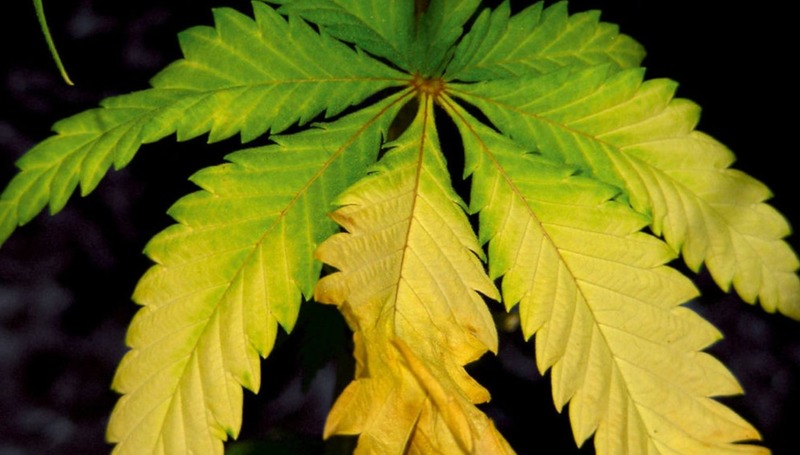How many of you have ever had a problem with your cannabis curls up or down? Cannabis is a difficult crop to cultivate, and one of the most prevalent problems California cannabis cultivars encounter is leaf curling. Looking to try something new? Check out this.
Today’s blog post debunks a few cannabis growing myths and explains how to tell if your plants are curling up or down, as well as why it happens in certain situations. Keep reading to find out how to cure this problem!

How To Fix Curling Or Clawing Cannabis Leaves?
Cannabis plants are unable to communicate for assistance, but they will provide you with signals if everything is all right. So, if your leaves are curling or clawing, it’s a sign that something is wrong with your plants.
Don’t ignore it and try to address the problem right away. The only way to cure curling or peeling leaves is to figure out what’s causing it and find a solution.
What Causes Curling Cannabis Leaves?
Overwatered
Cannabis may curl for a variety of causes, but most often it’s because the plant was watered excessively during growth. When the stem subsequently dries out, it snaps and bends as a result of this.
Overwatering will lead to curling or cupping of the leaves and buds, brown spots on leaves, and uncommon leaf discolorations. This is a typical issue with many herbaceous crops, such as moringa, that grows in water.
Nitrogen Deficiency
Cannabis curling can also be caused by a nitrogen deficiency in young leaves, but this is far less common than overwatering. nHow much nitrogen your cannabis needs varies depending on a variety of factors, including its size, light exposure, humidity levels, and growing medium.
How can you tell whether a curvy cannabis plant has a nitrogen deficiency if the symptoms are the same? When it comes to determining which problem your curvy cannabis plant has, there’s one simple rule: If your plant is young or hasn’t been blooming for long, it’s probably a nitrogen deficiency.
Age
Plants generally do not lose their leaves until after they are two years old. If the leaf tips aren’t curling inwards toward each other, it’s not due to age.
Pests
Cannabis plants are susceptible to a variety of pests. They aren’t always easy to spot, but their harmful effects will be obvious. Aphids and mites, which reside on the undersides of leaves and feed on the plant’s nutrients, are two of the most frequent cannabis plant pests.
The leaves of your tomato plants are most vulnerable to attack as they develop. The crisp, dry texture of the munched leaves is an indication that the damage has been done. If a pest problem isn’t dealt with promptly, the leaves will lose all of their vitality and nutrients. As a result of this, leaves may deform and become yellow.
Too Much Fertilizer
Fertilizer, like water, is required for the growth of your cannabis plants. However, overfertilization is not beneficial to their health. Excess nitrogen and other key elements in fertilizer can harm your plants over time. Applying a lot of fertilizer to your young plants is usually a bad idea since they haven’t developed a robust resistant system against many types of stress yet.
If you avoid fertilizing your plants too much with nitrogen early on, but then over-fertilize them with potassium or phosphorus later in their bloom period, the leaves will curl. Apart from curling, the tips of the leaves are susceptible to burning. Finally, owing to overfertilization, your plants may develop chlorosis, a common plant condition caused by excessive fertilizer application.
Heat Stress
Cannabis plants should be kept at a temperature of 23 degrees Celsius, whether indoors or outside. The plant will begin to lose water faster than it can be replenished in the root system if exposed to temperatures higher than 27 or 28 C, resulting in heat stress.
Heat stress manifests itself in the form of slow growth, browning leaves, and fan leaf curling or “canoeing” to keep water. Even a short episode of high heat (summer 2021, somewhat?) is enough to cause lasting damage to fan leaves, regardless of a robust root system.
The easiest approach to reduce the temperature in your grow room is to turn off the heat. Indoor farming installations are more difficult. If you observe new growth within a few weeks of having heat stress, it’s a sign that you have heat stress.
Wind Burn
It’s crucial to ventilate your grow room, but if there’s too much wind (there is a pattern here?) on your cannabis plants, it might be one of the reasons they’re curling. If you’re growing indoors, use fans at a low speed or position them away from the plants and don’t directly strike them. If you’re growing marijuana outdoors, you’ll probably need to bring the plants inside if they are in containers.
Light Burn
Heat stress and mild burn are occasionally associated, although even with ideal temperatures, light burn may occur. Indoor setups that have too many plants near the lights are more likely to induce light burn. The curling will generally happen at the top of the plant or whichever region is closer to the light source, as was the case with heat stress. The leaves will begin to yellow and curl if you’re dealing with light burn. If you’re suffering from light burn, move your plants further away from your lighting source; they’ll recover in time.
